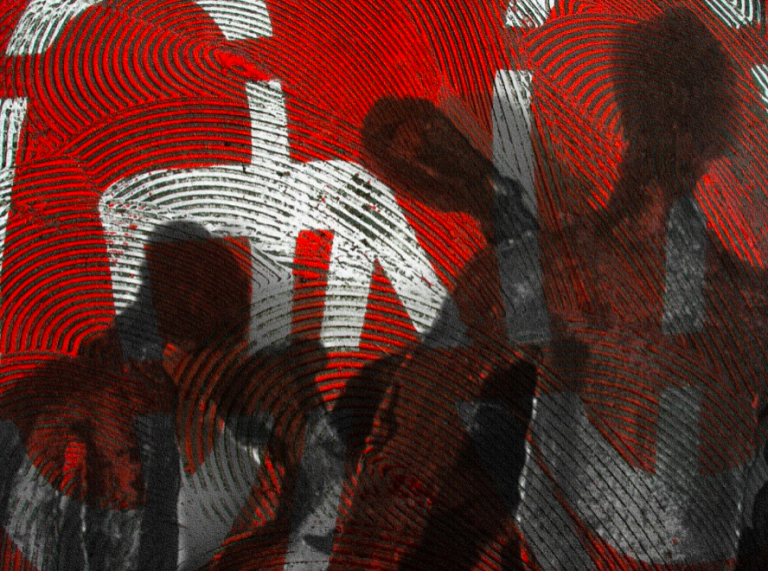Vicky Tsalamata is an artist from Athens, Greece, whose work offers a deep exploration of the human experience. Influenced by Honoré de Balzac’s La Comédie Humaine, her art provides a sharp commentary on life’s complexities, intertwining past and present to create thought-provoking narratives. Her approach invites reflection on our fleeting existence and the subtle forces that shape it.

As a Professor Emeritus of Printmaking at the Athens School of Fine Arts, Tsalamata blends her academic expertise with artistic innovation. Her work spans various mediums, including expanded printmaking, digital techniques, print installations, and video art. This multidisciplinary practice pushes traditional boundaries, offering a rich and layered visual experience that immerses viewers in a complex interplay of ideas.
One charactistic of Tsalamata’s work is her use of archival print on Photo Rag Hahnemuehle cotton paper, which lends a distinct texture and permanence to her pieces. Her creative process integrates intaglio, photography, lithography, and digital technology, combining traditional craftsmanship with contemporary methods. The result is a visually dynamic body of work that captures fleeting impressions and fragments of urban life.
In the series Graphics of the Road A, Tsalamata focuses on the subconscious impressions gathered during walks through the city. Drawing inspiration from 17th century iron matrices, which she cuts with an acetylene flame, she creates fragmented human forms that resemble fleeting shadows. These fragmented silhouettes evoke the transient encounters we experience daily, reflecting the anonymous yet interconnected nature of urban existence.

The layered techniques in this series—ranging from photography to digital elements—enhance the disjointed quality of the figures, situating them in a space that feels both familiar and alien. These shadowy entities hover in an ambiguous space, echoing the fragmented and often isolating aspects of city life.
Another project, Life Is Wildly Unpredictable. Can We Talk About It?, adopts a more political tone, addressing systemic injustices and societal failures. A piece from this series, titled Life Is Like a Slow Deep Breath. Can We Talk About It?, draws on the final words of Eric Garner, “I can’t breathe.” These words, repeated eleven times, became a powerful symbol against police brutality and systemic racism.
Tsalamata uses this work to amplify the ongoing struggles against social and political inequities, including exclusion, corruption, financial instability, and environmental degradation. The repeated question, “Can we breathe?” carries both literal and figurative weight, urging viewers to confront the suffocating challenges of contemporary society.
The emotional depth of this piece lies in its ability to merge visual storytelling with urgent social commentary. By layering words and images, Tsalamata creates a work that compels viewers to engage with the discomfort of these realities, questioning their role within them. The combination of stark imagery and evocative text creates an atmosphere that is at once arresting and reflective.
Tsalamata’s art strikes a balance between the personal and the universal. While her works are rooted in her experiences and observations of life in Athens, their themes resonate on a global scale. Her use of mixed media allows her to create multidimensional pieces that feel simultaneously immediate and timeless. These works compel viewers to examine not only the art but also themselves, as they navigate the fragmented and often chaotic landscape of modern existence.
By incorporating elements of dystopia and resilience, Tsalamata’s art suggests that even in fractured times, there is space for introspection and meaningful dialogue. Her work speaks to the resilience of the human spirit, reminding us that art can both document and dissect the complexities of the world we inhabit.
Through her unique blend of techniques and her sharp eye for the human condition, Vicky Tsalamata creates work that resonates deeply. Whether reflecting on the fleeting impressions of city life or addressing broader societal crises, her art offers a space for reflection and connection. It is this duality—personal yet universal, challenging yet contemplative—that defines her artistic voice.

